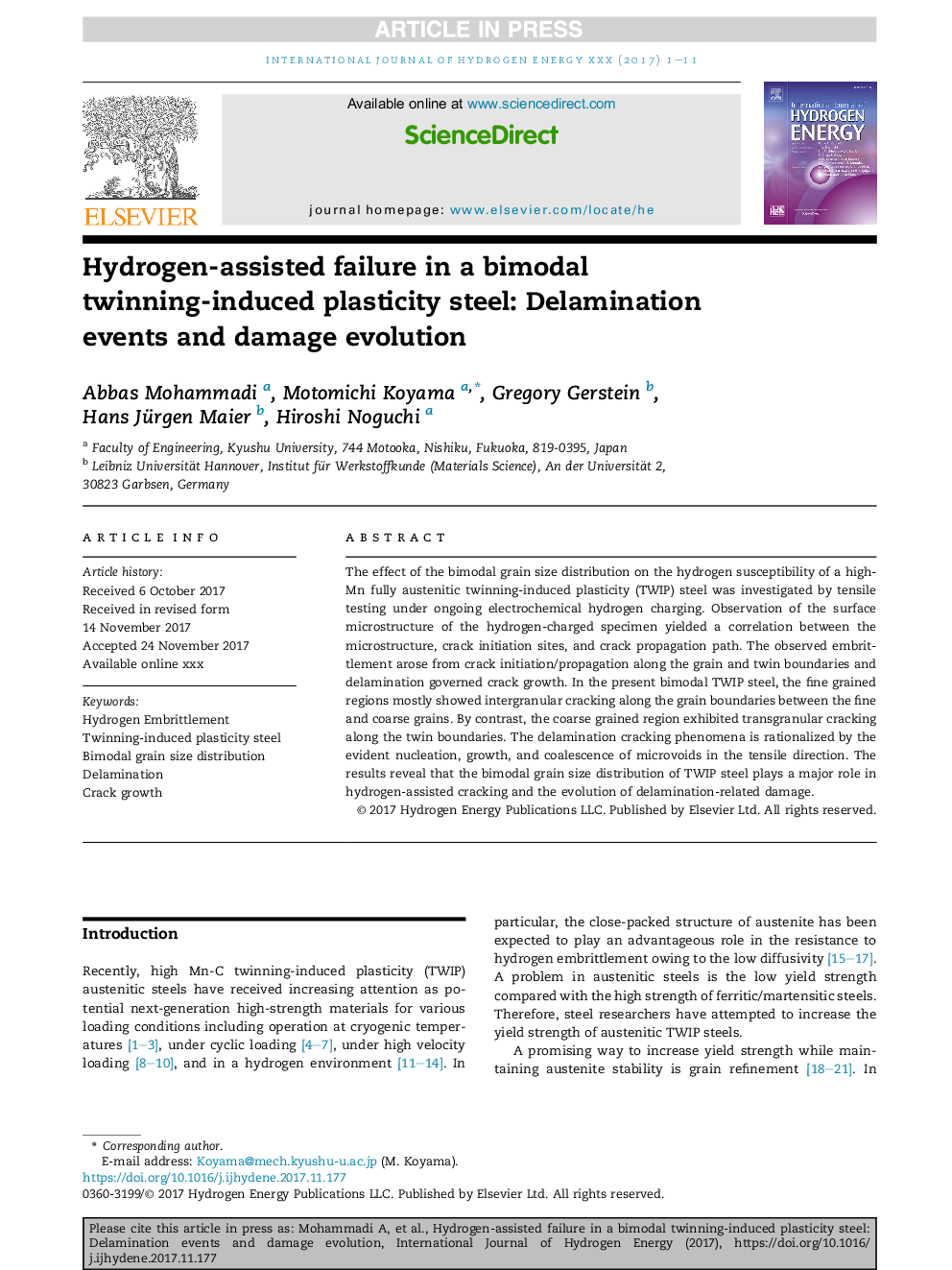| Article ID | Journal | Published Year | Pages | File Type |
|---|---|---|---|---|
| 7708365 | International Journal of Hydrogen Energy | 2018 | 11 Pages |
Abstract
The effect of the bimodal grain size distribution on the hydrogen susceptibility of a high-Mn fully austenitic twinning-induced plasticity (TWIP) steel was investigated by tensile testing under ongoing electrochemical hydrogen charging. Observation of the surface microstructure of the hydrogen-charged specimen yielded a correlation between the microstructure, crack initiation sites, and crack propagation path. The observed embrittlement arose from crack initiation/propagation along the grain and twin boundaries and delamination governed crack growth. In the present bimodal TWIP steel, the fine grained regions mostly showed intergranular cracking along the grain boundaries between the fine and coarse grains. By contrast, the coarse grained region exhibited transgranular cracking along the twin boundaries. The delamination cracking phenomena is rationalized by the evident nucleation, growth, and coalescence of microvoids in the tensile direction. The results reveal that the bimodal grain size distribution of TWIP steel plays a major role in hydrogen-assisted cracking and the evolution of delamination-related damage.
Keywords
Related Topics
Physical Sciences and Engineering
Chemistry
Electrochemistry
Authors
Abbas Mohammadi, Motomichi Koyama, Gregory Gerstein, Hans Jürgen Maier, Hiroshi Noguchi,
